I’m an Expert in Fitness Over 50 — Here’s How to Lose Weight by Walking

Let me share a little secret: managing your weight after 50 doesn’t have to be a daunting task. As a Geriatric Kinesiologist and founder of Mouvement Geriatric Physiotherapy, I’ve made it my mission to help adults over 50 navigate the challenges of weight management and overall health. This is essential for preventing and controlling chronic conditions like high cholesterol, high blood pressure, and diabetes. Weight management after 50 is crucial not just for maintaining mobility but for reducing the risk of sedentary behavior and related diseases. I can personally vouch for this—I lost nearly 60 pounds by following the very strategies I’ve developed and researched, especially for women facing the challenges of perimenopause.
RELATED: Why Walking Only 3,867 Steps a Day Is All You Need, Science Says.
Embrace Low-Impact Walking

Walking is a universally recognized activity that most individuals can continue to do throughout life. It promotes full body circulation, stimulates the heart, assists in eliminating toxins, and the creation of new blood cells. A common misconception in the health, wellness, and fitness industry is that weight loss only comes from rigorous exercise. This is not true! Especially for people over 50, low-impact activities, like walking, reap more beneficial outcomes than heavy lifting.
Meet Your Expert Guide
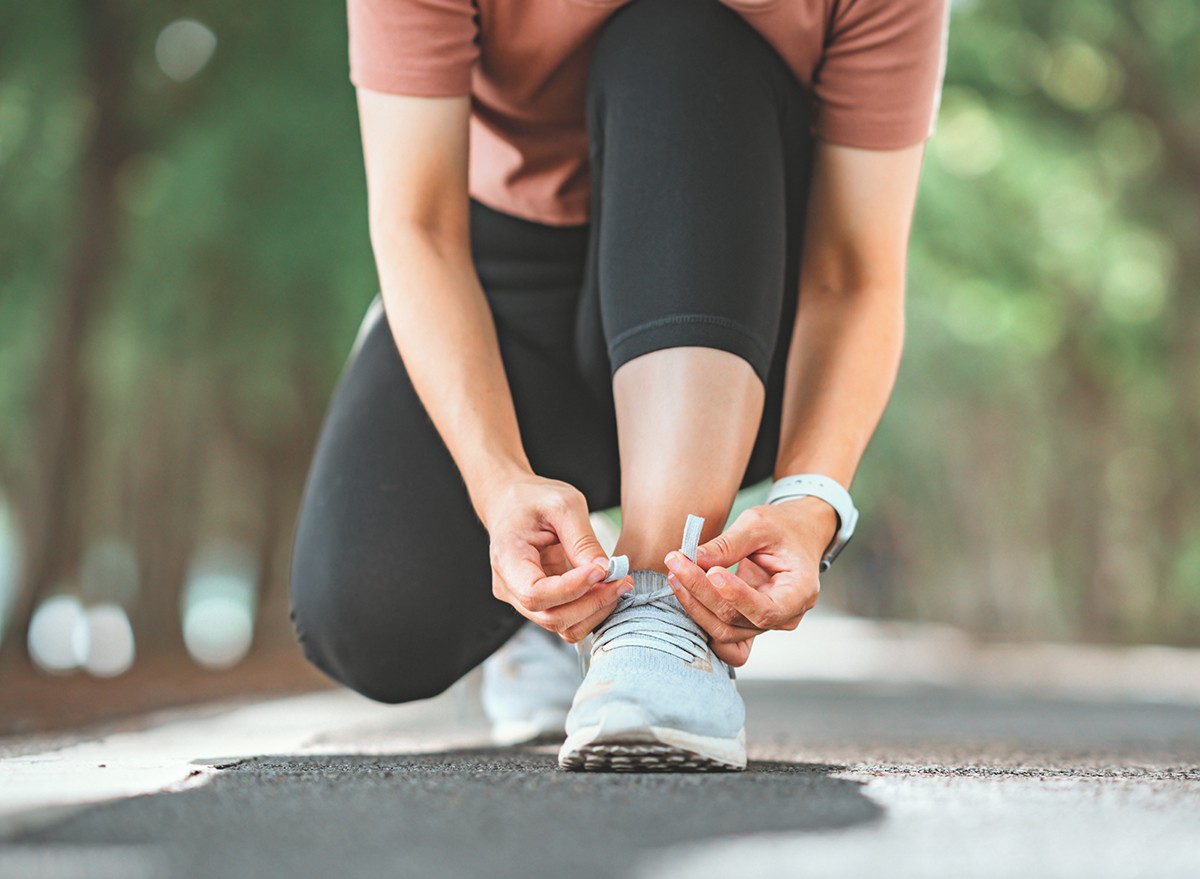
I am a geriatric kinesiologist and founder of Mouvement Geriatric Physiotherapy. I hold a master’s degree in Kinesiology with a pre-medical background and clinical discipline in land and aquatic-based rehabilitation therapy.
My deeply rooted passion for serving older adults began at an early age when I spent quality time with my grandfather gardening and playing music. I became my grandfather’s primary caregiver at age 19 until his passing, which enriched my personal experience of elder health care simultaneously with my educational studies of fitness. I merged the two to serve an overlooked community in the health and wellness space and have been a senior fitness specialist for nearly ten years.
Prepare for Safe Walking

Safety is first and foremost. People over 50 should know their physical limits, where they plan to walk, their stamina, and how many ailments/conditions they have that might flare up. What I often see with beginner walking routines is ignorance of shoes, distance, weather, and rest areas.
For example, what is the landscape of the route planned? Is it in the neighborhood? Busy street? Hiking trail with loose gravel/dirt? Is there shade to rest on a hot day? Are you walking alone or with someone? All of these variables require planning and preparation. i.e.) different terrains require different shoes and equipment. A baseline for beginners requires reliable shoes with grip (avoid sandals/slippers), a hat, water, and identification. Having that mind mind read on to learn best strategies to effectively lose weight by walking after 50
Pick Up the Pace

The first strategy for effectively losing weight is to walk at a steady, accelerated pace. This means your heart rate should be slightly elevated enough for you to feel a mild sweat. Weight loss only works when we kick our body into “workout” mode. A brisk walk typically doesn’t take much effort, and the body remains at baseline. Therefore, for your body to shift gears, pick up the pace so that you’re walking fast enough but not running.
RELATED: Walking Pads Are the Latest Wellness Trend Everyone’s Talking About.
Go the Extra Mile
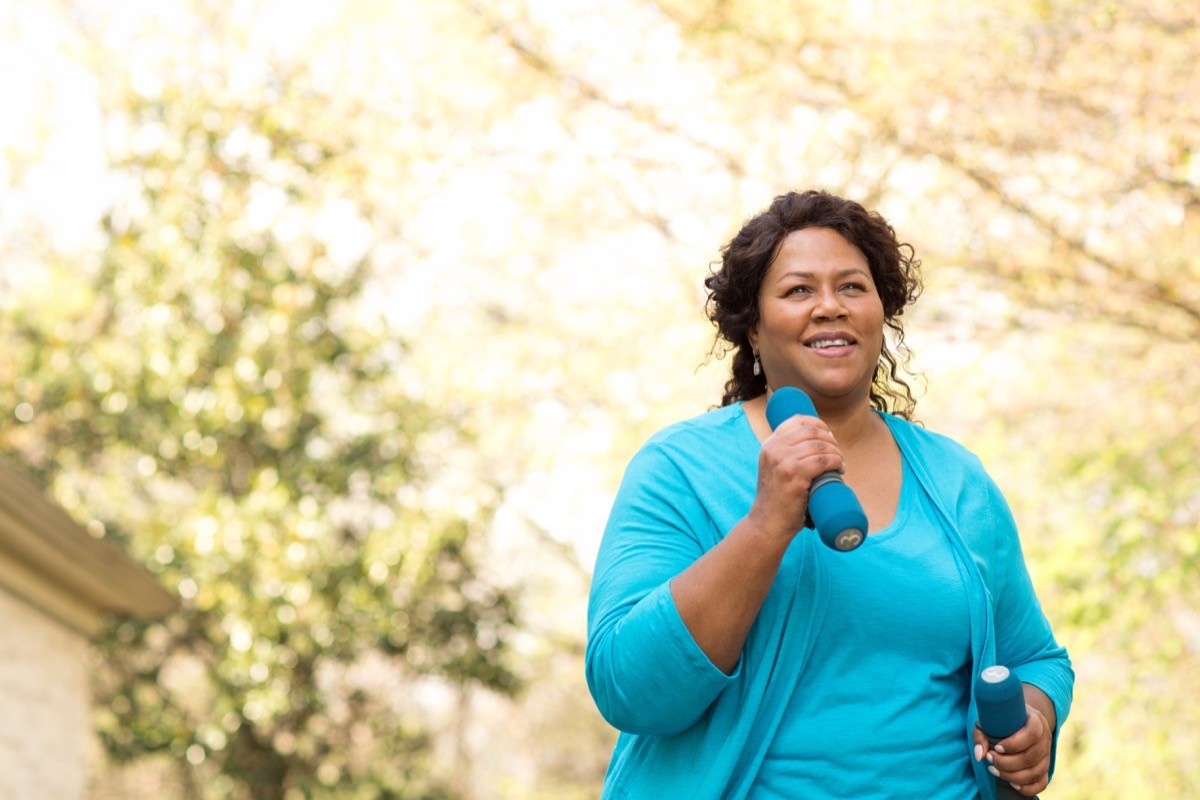
Motivate yourself to go further each walk at the same elevated pace. The body needs to be continuously challenged. The further you go, the more your physiological systems for losing weight will be in action.
Make It a Habit
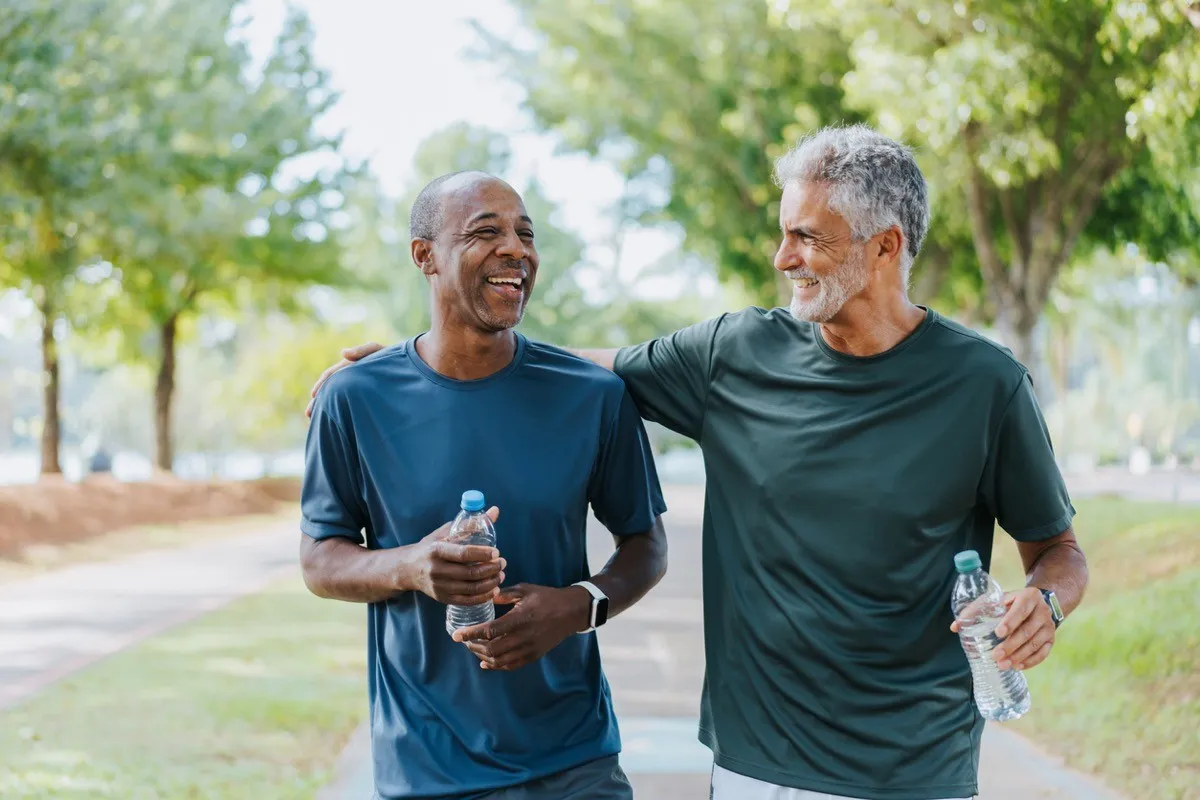
Commit to a routine and stick to it. The body needs repetition to breed results. The more times you walk, the higher your chances of weight loss and health benefits. It is recommended that you walk 3-5 times/week.
Mix Up Your Route
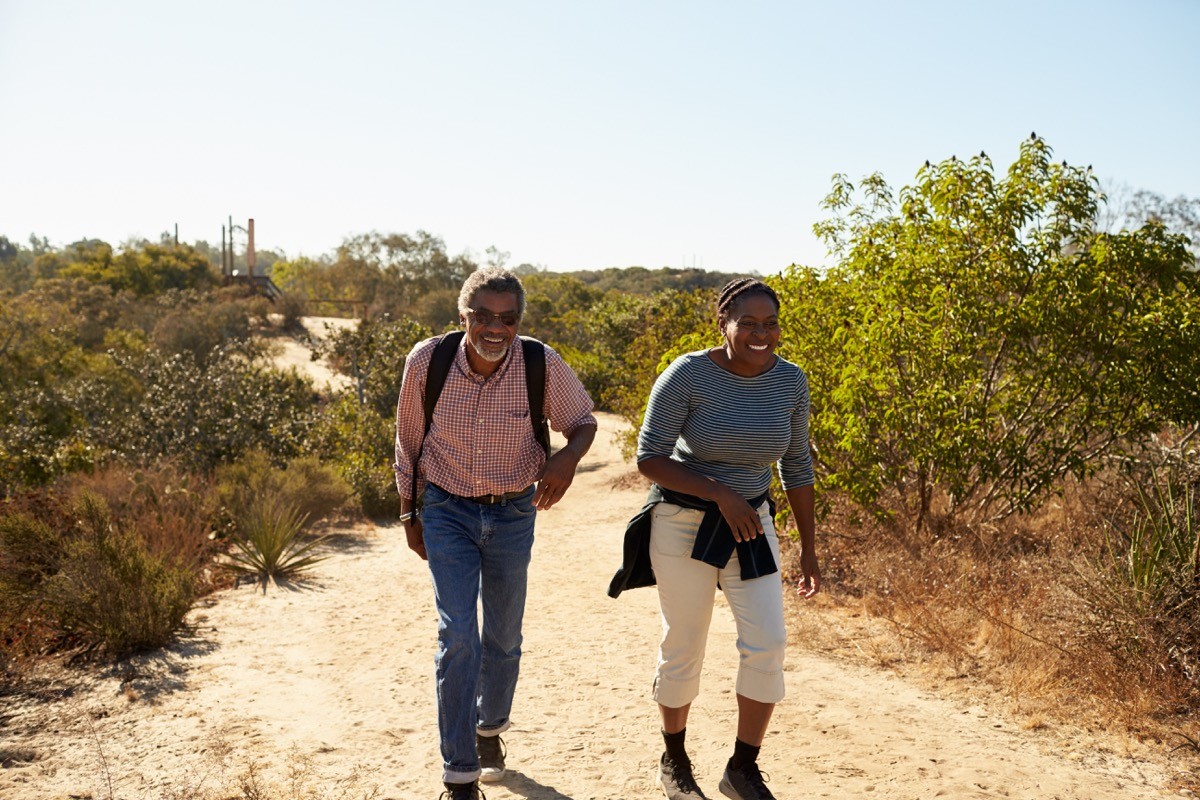
The body adapts quickly, so it’s vital to mix up your route semi-often. Challenge yourself with different terrains. It doesn’t need to be dramatic; it can be as simple as walking on grass, dirt, or sand. If you walk on a concrete sidewalk every day, is there a nearby park with small hills? How about a weekend trip to the beach? Even in urban environments, climb stairs or accessibility ramps so your body gets something new every once in a while. This versatility will not only condition smaller stabilizing muscles for balance, it will increase metabolic energy that will assist with weight loss.
Add Strength Moves

Along with your walking routine, it is suggested that you add supporting exercises. The body is one unit so everything counts. This strategy complements conditioning muscles for strength and endurance. For example, after 15 minutes of walking, stop and do 10 heel raises, and then continue walking. After 15 minutes, do 8-10 sit-to-stands on a bench (squats). Adjust accordingly to your time frame and fitness level.
RELATED: Silent Walking Is the Latest Wellness Trend Everyone’s Talking About.
Find a Walking Buddy
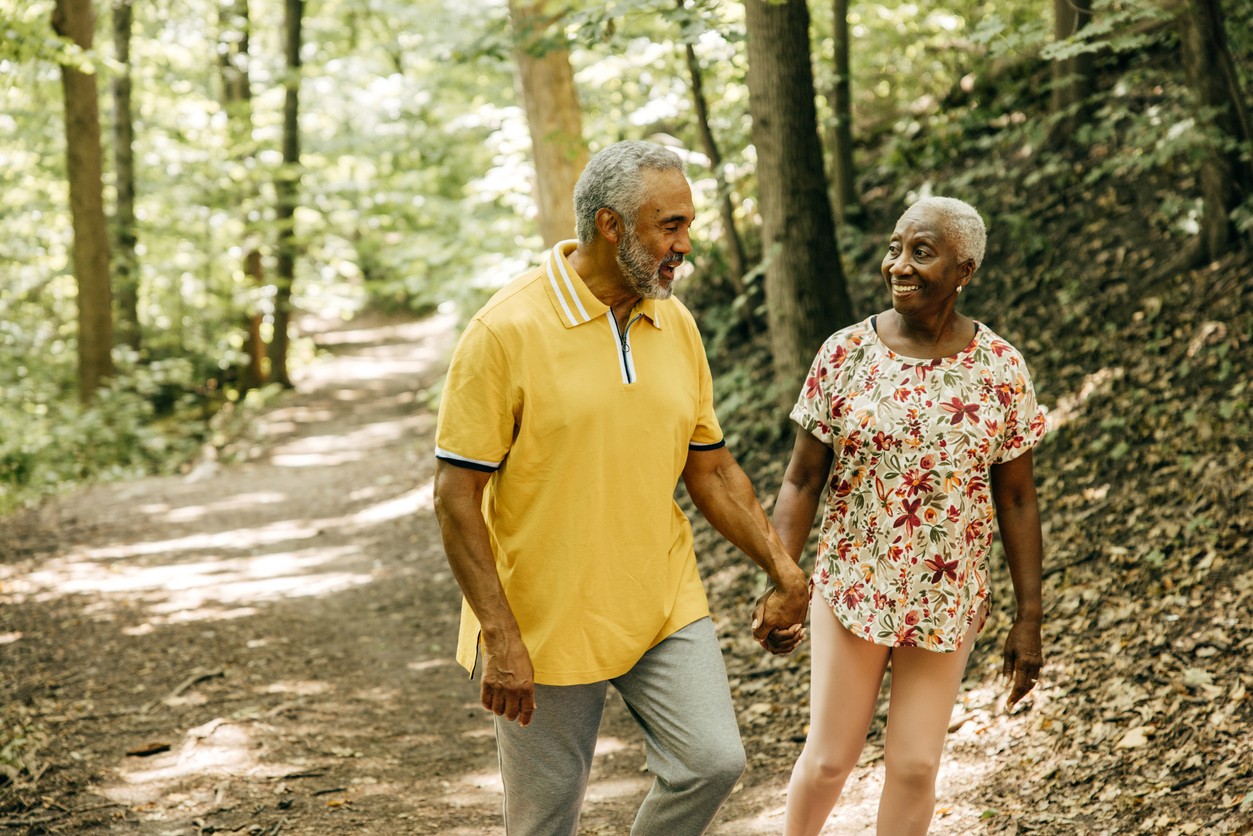
Have you ever realized how much further we walk when we’re chatting on the phone with a friend? Find a walking buddy for accountability, consistency, and socialization. Walking together creates safety and improves commonly affected social determinants of health, such as loneliness, depression, and isolation. You’ll be surprised that you can cover more distance with a walking buddy.
Stay Hydrated
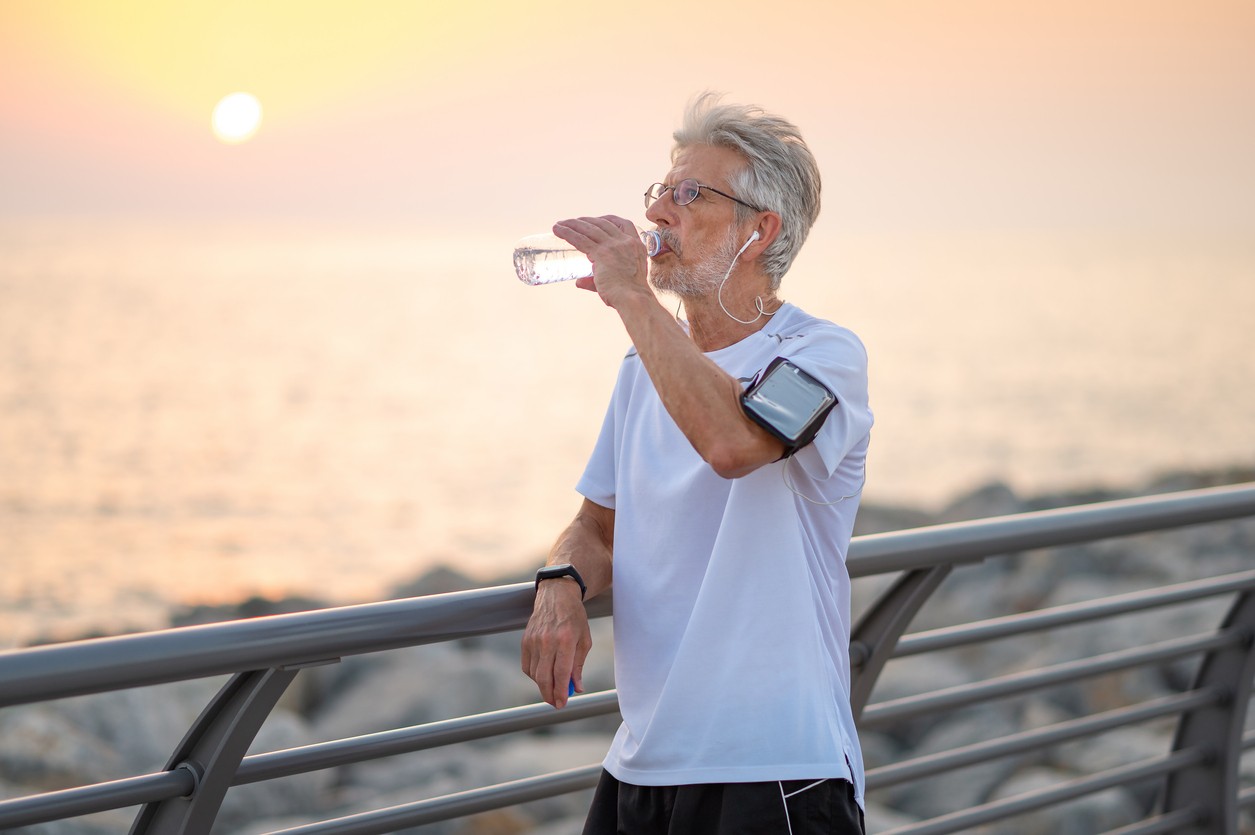
We hear it all the time, but how hydrated are we, really? Drinking water has many benefits for weight loss. Staying hydrated when walking to lose weight is important, especially for people over 50. Water replenishes the body and energy it loses during movement. Even when we don’t physically sweat, our body is, in fact, “sweating,” and we must replenish those reserves. Dehydration can be serious or even fatal.
Fuel Your Walks Right

With increased movement, our metabolism rises, and our urge to eat increases. What many people struggle with during weight loss is needing to understand what nutrition supports them. With people over 50, it’s common to have favorite meals, and we don’t need to take any of those away. Instead, bring in mindfulness. Carbs are easy go-to’s (and delicious), but if you’re serious about weight loss, it’s essential to reduce the amount in your diet. For example, you can still have pasta if you love pasta, but 2 times a week rather than 5. Seek a nutritionist for further guidance.
Embrace Rest Days
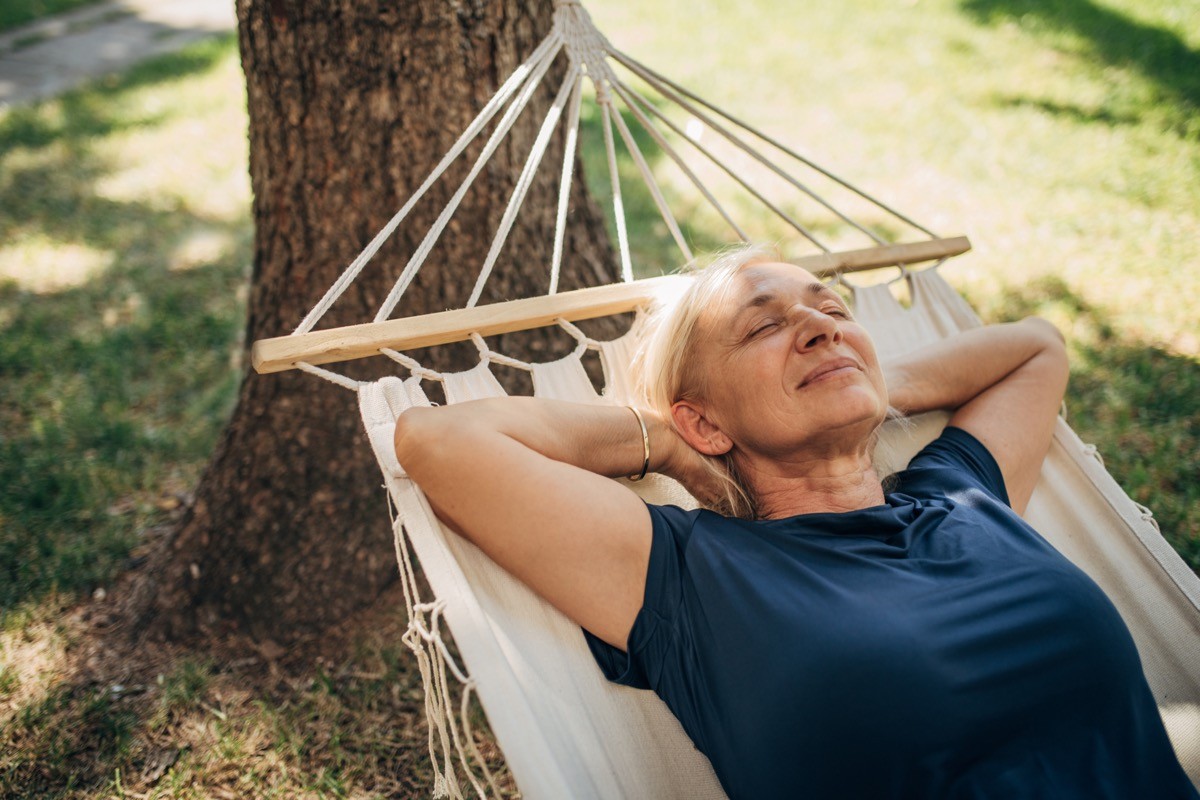
Contrary to what many may believe, recovery is a vital part of weight loss and physical training. The body needs ample time to rest from the exertion you’ve put it through. Don’t believe that you have to push yourself every day to lose weight. Instead, alternate a rest day in between your walking routine. In those rest periods, keep up with your nutrition and hydration and see that you will be able to go further than if you kept pushing yourself. Avoid burnout and embrace rest.
RELATED: 91-Year-Old Fitness Star Shares Her Best Workout Tips to Stay Young.
Prioritize Safety

Walking is a universal activity that is relatively safe; however, various conditions may be exacerbated or at risk with intense activity. Always check with your primary care provider that you can participate in physical activity. If you have pre-existing cardiac conditions, it is best practice to let your relatives/friends know when you are out walking.
Stay Motivated

Humans are creatures of habit, and once there is consistency, the body will crave walking. Find a companion or make goals. Pets are excellent walking companions.